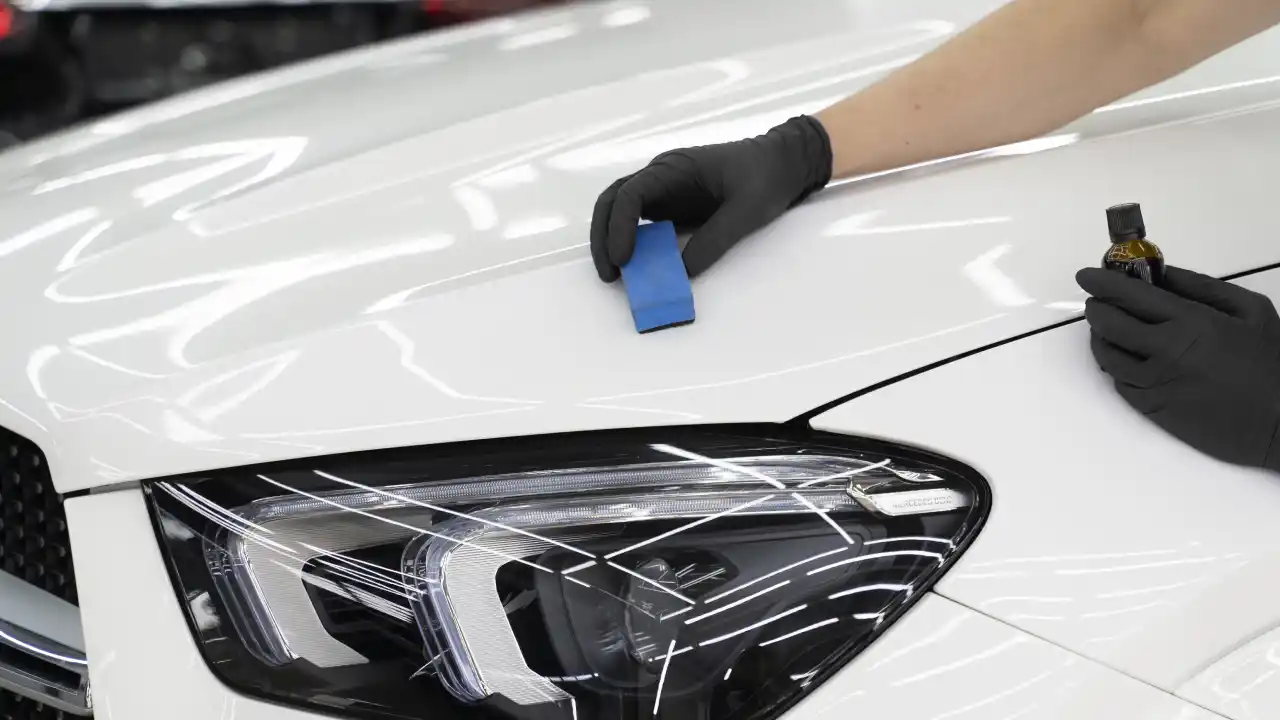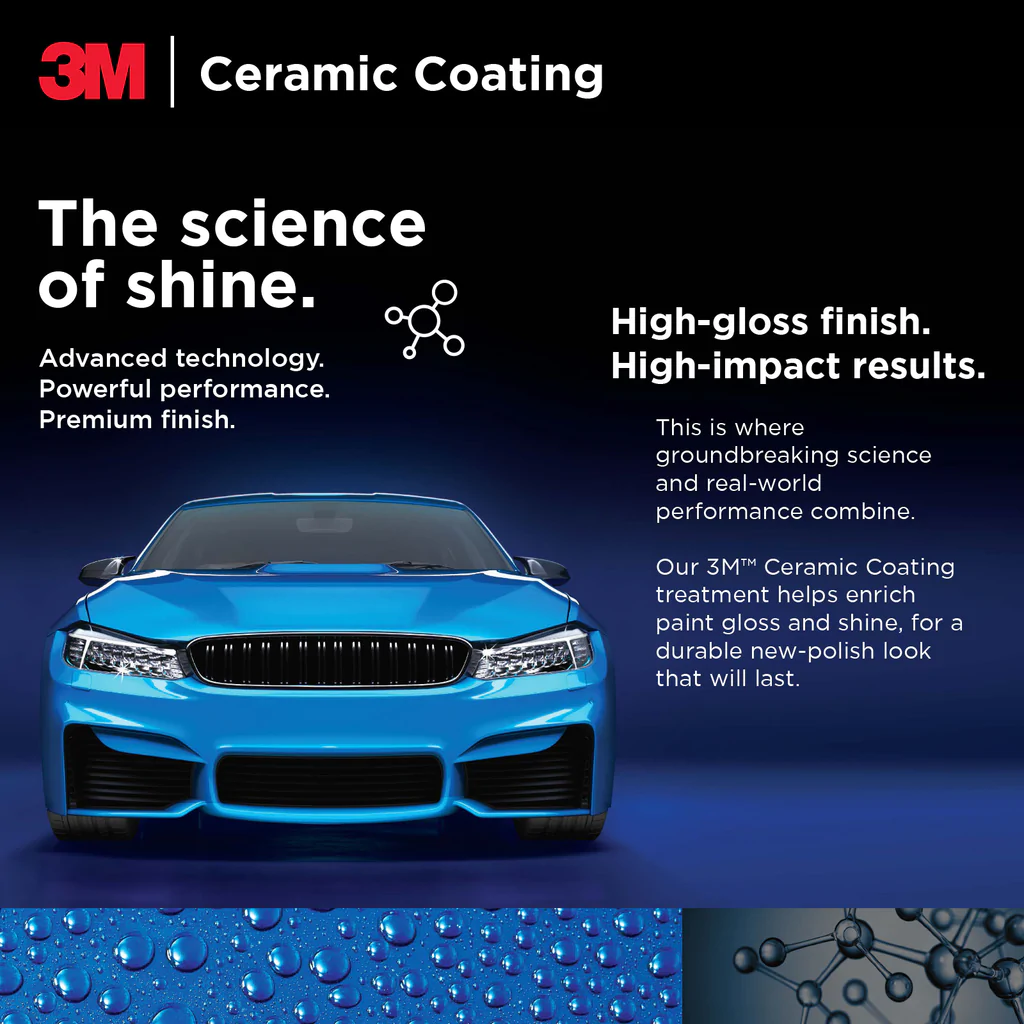What to Expect During Your Ceramic Coating Application Process
What to Expect During Your Ceramic Coating Application Process
Blog Article
The Duty of Ceramic Layer in Shielding Your Auto's Paint From Environmental Damage
Ceramic layer has emerged as a sophisticated solution for cars and truck owners looking for to maintain the honesty of their automobile's outside. By developing a robust chemical bond with the paint, this sophisticated technology provides an awesome obstacle against various environmental risks, such as UV rays, acid rain, and impurities. Comprehending the detailed benefits and the intricacies of the application process is important for optimizing its efficiency. As we explore the subtleties of ceramic covering, it comes to be obvious that the selection to apply this protective measure might considerably affect your vehicle's longevity and aesthetic.
What Is Ceramic Finishing?
Ceramic coating is an innovative fluid polymer related to the external surface areas of a car, created to supply a durable layer of defense for the paint. This ingenious solution creates a chemical bond with the car's factory paint, creating a hydrophobic and durable shield. The layer contains nanoparticles that fill in the microscopic blemishes in the paint, resulting in a smooth surface area that improves gloss and shine.
Commonly, ceramic finishes are readily available in various formulations, permitting different degrees of security and durability. While some products can last for numerous months, others offer defense for several years, relying on the density of the application and ecological aspects. The application process calls for careful prep work, including washing, decontaminating, and brightening the vehicle's surface to make certain optimum attachment of the finishing.

Advantages of Ceramic Coating
Among the key benefits of applying a ceramic finishing is the phenomenal security it uses to vehicle paint. This advanced finish creates a resilient layer that guards the automobile's surface area from a range of environmental threats, including UV rays, acid rain, bird droppings, and tree sap. By providing this robust defense, ceramic coverings substantially lower the threat of fading and etching, maintaining the car's aesthetic appeal with time.
In enhancement to defense, ceramic coatings are renowned for their hydrophobic homes, which repel water and dust, making it less complicated to keep a tidy lorry. This self-cleaning result decreases the frequency of washing, saving both time and sources. Moreover, ceramic layers improve the deepness of the paint's gloss, causing a vivid and refined look that boosts the total appearance of the lorry.
An additional notable advantage is the longevity of ceramic coverings. Unlike standard waxes or sealants that call for constant reapplication, ceramic coatings can last a number of years, offering a cost-effective solution for automobile owners seeking long-lasting protection. On the whole, spending in ceramic covering brings about improved sturdiness, lowered upkeep, and sustained visual charm for vehicle paint.
Just How Ceramic Coating Functions
A ceramic finish operates through a chemical bonding procedure that produces a protective layer on the automobile's paint surface area. This cutting-edge service official source uses sophisticated nanotechnology, where tiny fragments of silica are suspended in a fluid type - ceramic coating. Upon application, these fragments bond with the factory paint, creating a hydrophobic and long lasting layer that improves the lorry's surface area
The main component of ceramic coverings, silicon dioxide (SiO2), adds to the coating's strength and resilience. When treated, the finishing transforms into a hard, glass-like surface that guards the paint from environmental impurities such as dirt, UV rays, bird droppings, and tree sap. This molecular bond causes a surface area that is not only resistant to scrapes however also easier to clean up, as dust and grime are much less most likely to adhere.
In addition, the hydrophobic residential properties of ceramic coverings trigger water to grain and slide off, lowering the possibilities of water places and natural resource. This safety barrier properly lengthens the life of the paint and keeps the vehicle's aesthetic charm, supplying vehicle owners a resilient service for paint security.
Application Process of Ceramic Finishing
When considering the application of ceramic finishing, preparation is vital to achieving optimum results. Any type of scratches or flaws need to be resolved at this stage, as the covering will bond with the surface area below.

Ceramic finish is then used in tiny sections, generally making use of an applicator pad. The automobile needs to be left to cure in a regulated environment to enable the finish to completely bond with the paint.
Long-Term Maintenance and Care
Attaining an effective ceramic coating application establishes the structure for long-lasting protection, yet appropriate maintenance is important to protecting its benefits. Routine cleaning is vital; using a pH-neutral automobile shampoo will certainly assist preserve the finish's honesty without creating damages. Avoid automated car washes that use unpleasant products, as they can compromise the finish's surface area.

Additionally, navigate to this website applying a ceramic coating upkeep spray can boost the existing layer, giving an additional increase in security and shine. It's a good idea to do this every three to 6 months, depending upon environmental exposure.
Finally, vehicle parking in shaded locations or using vehicle covers can stop extended exposure Read Full Report to hazardous UV rays and ecological impurities, even more extending the life of your ceramic finish. By adhering to these maintenance techniques, you can ensure your vehicle's finish remains safeguarded and aesthetically appealing for many years to come.
Final Thought
In recap, ceramic finishing functions as a crucial protective action for automobile paint, efficiently shielding vehicles from a variety of ecological hazards. Its capacity to create a robust hydrophobic barrier not just boosts visual allure but additionally substantially reduces the regularity and strength of upkeep needed. The lasting nature of this innovative polymer underscores its value in maintaining lorry integrity and look, eventually adding to an extra aesthetically enticing and long lasting automotive surface.
Ceramic finish is an advanced liquid polymer applied to the external surfaces of an automobile, developed to offer a sturdy layer of protection for the paint. Ceramic coverings improve the deepness of the paint's gloss, resulting in a refined and vivid appearance that boosts the general look of the car.
A ceramic finishing operates through a chemical bonding process that produces a safety layer on the vehicle's paint surface area.The primary component of ceramic layers, silicon dioxide (SiO2), adds to the finish's strength and strength.In summary, ceramic finishing serves as an important safety measure for vehicle paint, efficiently shielding automobiles from an array of environmental hazards.
Report this page